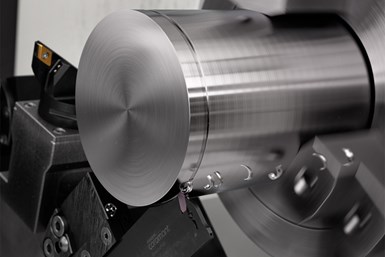Sandvik Coromant Parting Tool Provides Improved Surface Quality
CoroCut QD Y-axis parting tools feature upgraded blades with no Y offset, providing easier programming and increased stroke.
Sandvik Coromant has upgraded its CoroCut QD Y-axis parting tools to enable improved surface quality, reduced vibration and higher blade stiffness.
CoroCut QD enables for the parting off of much larger diameters than what is currently possible with conventional methods, according to the company. Additionally, shifting the resultant load to the strongest section of the blade creates six times higher blade stiffness, enabling increased feed and longer overhangs without losing stability.
More specifically, the blades have been upgraded to have no Y offset, meaning easier programming and increased stroke. The blades also have a stop surface that serves two important application needs — preventing the blade from being pushed into the adapter and enabling easier setup.
“Conventional parting off uses feed motion along the X axis, which means the cutting force is directed through the weakest section of the blade,” says Fredrik Selin, global product application specialist in turning. “This can lead to deformation and instability. By rotating the insert pocket 90 degrees and using the Y axis, the cutting force is shifted down through the complete blade length, resulting in an increased blade stiffness of up to 600%.”
“CoroCut QD is ideal for parting off in turning centers and multitask machines with Y axis,” Selin adds. “This includes parting off in sliding head machines, large diameters of up to 120 millimeters and long overhangs to reach between main and sub chuck. So, when there is the need to part off or machine deep grooves without compromising process security or machining efficiency, the upgraded CoroCut QD solution is the perfect choice.”
Related Content
-
Parting Off: The Case for Standardizing on Sawing
The value of rotary saw cutting for parting off operations could boil down to simple economics paired with process efficiency gains.
-
Replaceable-Insert Spade Drill Basics, Advantages
Although solid carbide and indexable-insert drills have their place in a machine shop, replaceable-insert spade drills offer specific advantages for various holemaking operations on machining centers and lathes.
-
Tool Path Improves Chip Management for Swiss-Type Lathes
This simple change to a Swiss-type turning machine’s tool path can dramatically improve its ability to manage chips.















.png;maxWidth=300;quality=90)

